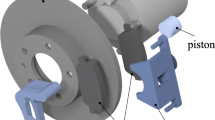Abstract
In this paper we propose a nonlinear programming model, composed of a cumulative standard normal probability function and manufacturing cost, to design process tolerances. The tolerances are standardised in conjunction with the process capability of the machinery to minimise the total manufacturing loss that occurs owing to non-conforming parts. The proposed model has been applied to a workpiece manufactured through ten operations and solved by GINO (General INteractive Optimizer). A comparison between the results obtained by the proposed model and other methods indicates that robust process tolerances can be obtained by the new formulation.
Similar content being viewed by others
References
H. C. Leung, “Annotated bibligraphy on computer-aided process planning”,International Journal of Advanced Manufacturing Technology,12(5), pp. 309–329, 1996.
H. C. Zhang and M. E. Huq, “Tolerancing techniques: the-state-of-the-art”,International Journal of Production Research,30(9), pp. 2111–2135, 1992.
B. K. A. Ngoi, “Applying linear programming to tolerance chart balancing”,International Journal of Advanced Manufacturing Technology,7, pp. 187–192, 1992.
B. K. A. Ngoi and S. L. Fang, “Computer aided tolerance charting”,International Journal of Production Research,32(8), pp. 1939–1954, 1993.
B. K. A. Ngoi and C. K. Tan, “Computer aided tolerance charting — a block box approach”,International Journal of Production Research,33(4), pp. 1117–1134, 1995.
J. R. He and G. C. Lin, “Computerized trace method for establishing equations for dimensions and tolerances in design and manufacture”,International Journal of Advanced Manufacturing Technology,7, pp. 210–217, 1992.
P. Ji, “Determining dimensions for process planning: a backward derivation approach”,International Journal of Advanced Manufacturing Technology,11, pp. 52–58, 1996.
P. Ji, “A linear programming model for tolerance assignment in a tolerance chart”,International Journal of Production Research,31(3), pp. 739–751, 1993.
Chiu-Chi Wei and Yu-Cheng Lee, “Determining the process tolerances based on the manufacturing process capability”,International Journal of Advanced Manufacturing Technology,10(6), pp. 187–192, 1995.
W. J. Lee, T. C. Woo and S. Y. Chou, “Tolerance synthesis for nonlinear systems based on nonlinear programming”,IIE Transactions,25(1), pp. 51–61, 1993.
M. Y. Nagarwala, P. S. Pulat and S. Raman, “A slope-based method for least cost tolerance allocation”,Concurrent Engineering,3(4), pp. 319–328, 1995.
B. K. A. Ngoi and M. S. M. Seng, “Tolerance synthesis adopting a nonlinear programming approach”,International Journal of Advanced Manufacturing Technology,11, pp. 387–393, 1996.
S. S. Lin, C. Zhang and H. P. Wang, “On mixed-discrete nonlinear optimization problems: a comparative study”,Engineering Optimization,23, pp. 287–300, 1995.
D. F. Eary and G. E. Johnson,Process Engineering for Manufacturing, Prentice-Hall, New Jersey, 1962.
Author information
Authors and Affiliations
Rights and permissions
About this article
Cite this article
Lee, YC., Wei, CC. Process capability-based tolerance design to minimise manufacturing loss. Int J Adv Manuf Technol 14, 33–37 (1998). https://doi.org/10.1007/BF01179414
Issue Date:
DOI: https://doi.org/10.1007/BF01179414




